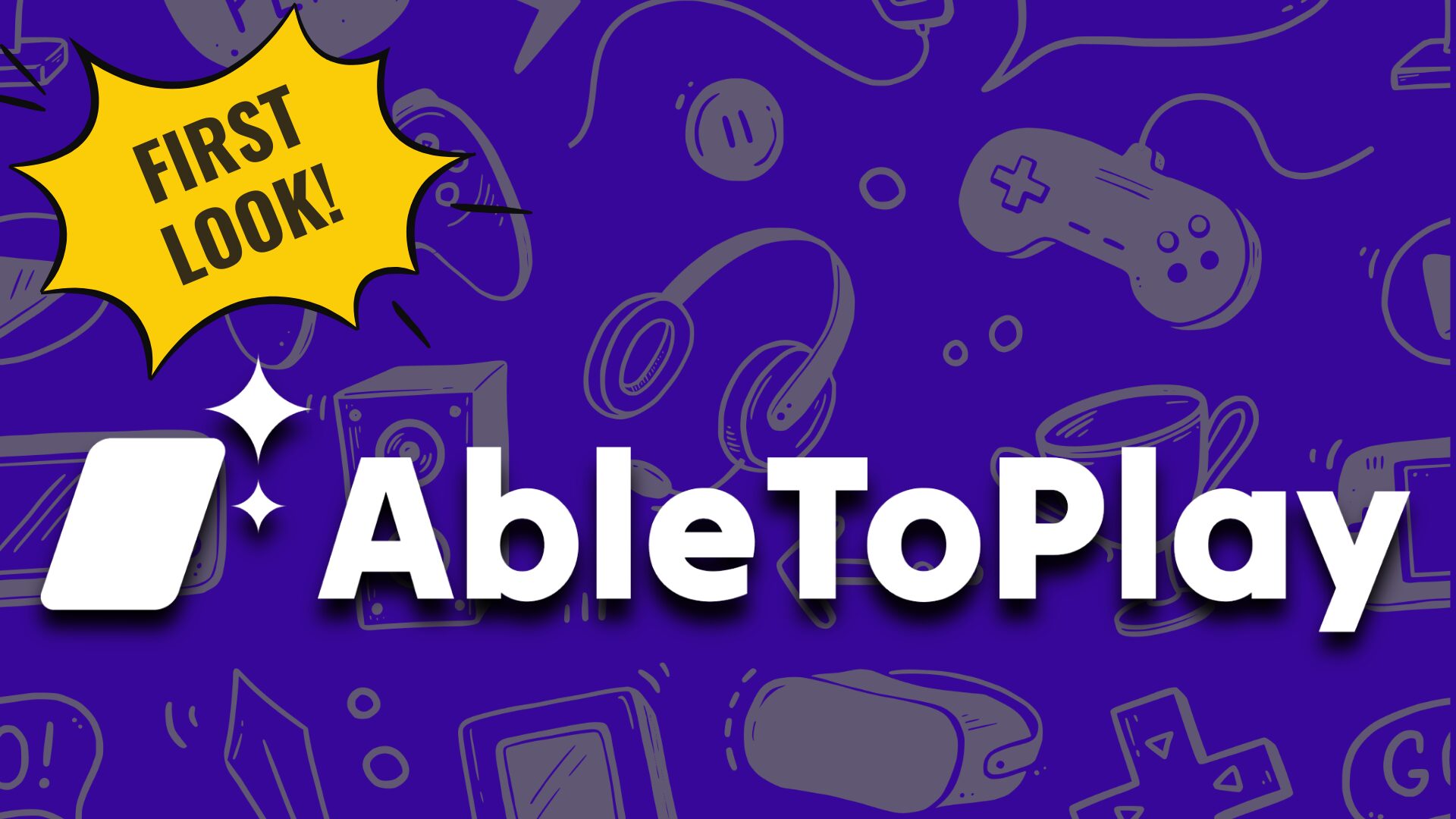
After I posted an article about how to find safe videogames for people with epilepsy, a reader asked me if I’d heard about AbleToPlay, a new website for finding accessible games.
It wasn’t something I’d heard about, but I joined the developer’s Discord and was able to snag an invite link.
Personalized Game Recommendations
AbleToPlay works by allowing users to select from a broad menu of accessibility options that they need or prefer when playing videogames. Games are then sorted by a Personalized 0-100 Score based on how closely they meet your selected needs and preferences.
For example, I selected a handful of visual preferences that generally make games easier for me to play with my photosensitive epilepsy: settings like adjustable screen shake or rotation, brightness and contrast, controls to minimize flashes or strobes, etc.
Based on those preferences, the site gives God of War: Ragnarok a 93/100 Personalized Score for my needs, while The Last of Us: Part 1 only ranks 57/100. This is largely because God of War: Ragnarok has settings for motion sickness support and partial support for settings to reduce full screen flash effects, two settings that The Last of Us: Part 1 lacks.
I’ve never played either of those games, so I can’t really comment on how accurate that assessment is, but I like that the Personalized Score lets me view at a glance how accessible a game might be.
Users can also view a game’s profile to see a personalized deep dive assessment of the game’s accessibility features.
Q&A With Arman Nobari
AbleToPlay is the brainchild of Arman Nobari, CEO of indie game studio Good Trouble. I had the opportunity to pick Arman’s brain a bit through Discord:
Wobblerocket: What can you tell me about the site’s origins? What made you want to create a site for accessible videogaming?
Arman Nobari: The original inspiration for AbleToPlay goes back to when I was in the hospital earlier in life, going through chemo. Games were my escape and really helped me through that experience, but my friends in the hospital couldn’t play many games due to poor accessibility. That experience really stuck with me over the years — games have an potential to bring amazing joy and social connection to people, but only if you can play them. That’s really what drove me to create AbleToPlay.
We want to make it super easy and fast to discover great games that fit your exact preferences and accessibility needs, totally privately, for free. No more guesswork on what’s playable or not.
Btw we’ve got some pretty exciting updates ready for the New Year!
Wobblerocket: Ooh. Anything you want to share about the New Year updates?
Arman: We’re really excited about what’s coming up! First and foremost, we’ll be expanding access by opening up our waitlist to welcome more players into the AbleToPlay community, alongside continual improvements of the platform’s accessibility.
We also have a big roadmap of new features in development – from improving game discovery, to making it easier to manage your needs and preferences, to making your voice heard, and to helping developers know how to improve their games. We have some big surprises for the year planned too, but I can’t say much more on that for now!
Wobblerocket: Is your development roadmap posted publicly anywhere?
Arman: No, but we’re considering making a version of it public. I’m happy to answer any questions though!
Before launching Good Trouble, Arman served as an Interaction Designer for YouTube and a Senior Product Designer for Udemy, spearheading a program to provide online education resources to inmates of San Quentin State Prison as part of a partnership called The Last Mile.
Here’s a great interview with Arman on the Pixel Pizza Podcast that dives deeper into Arman’s experiences as a cancer survivor and how that led him to design games and pursue accessibility in gaming:
Let’s dive into the site itself and its features:
Every Accessibility Feature That AbleToPlay Supports
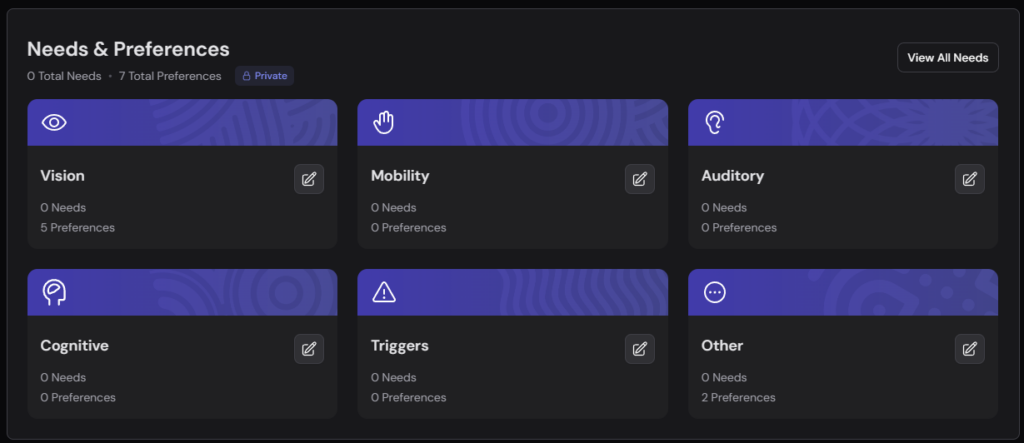
The Needs and Preferences menu is the workhorse of AbleToPlay. Here, you can select every accessibility option you need in order to play games and note whether those are Needs or Preferences. The difference between Needs and Preferences seems to mostly affect how much a given accessibility feature is weighted in the Personalized Score calculation.
These Needs and Preferences are sorted into six categories: Vision, Mobility, Auditory, Cognitive, Triggers, and Other. Here’s a list of all the accessibility features the site currently supports:
Vision Needs
- Colorblindness Support
- Adjustable Brightness, Contrast, or Gamma
- Text Resizing
- UI Resizing or Adjusting
- UI Recoloring
- Camera Movement, Shake, or Rotation
- Contextual Outlines or Highlights
- Adjustable Motion Blur
- Adjustable Field of View
- Narrated UI Labels
- Text-to-Speech
- Screen-Reader Compatibility
- Gameplay Audio Cues
- Motion Sickness Support
- No Strobes or Flashing
- Play Without Sight
- Special Visual Support
Mobility Needs
- Remappable Controls
- Adjustable Control Sensitivity
- Gamepad Support
- Keyboard and Mouse Support
- Aim Assist
- Target Lock-On
- Change Button Holds to Toggles
- Option Repeated Taps
- Quick-Time Events (QTE) Options
- Automatic Movement
- Single-Stick Core Inputs
- Inverted Axes
- Multi-Device Shared Inputs
- Slow Time
- Touchpad-Friendly Controls
- Special Movement Support
- Special UI Navigation Support
- Special Controls Support
Auditory Needs
- Volume Controls
- Mono Audio
- Closed Captions
- Subtitles
- Subtitle Styling Options
- Subtitles Speaker Indicator
- Subtitles With Background
- Proximity Audio Cues
- Core Gameplay Audio Cues
- Speech-to-Text
- Directional Audio Indicators
- Play Without Hearing
- Special Audio Support
Cognitive Needs
- Quest or Goal Tracking
- Quest or Goal Guidance
- Difficulty Settings
- Adaptive Difficulty
- Accessible Reading Level
- Dialogue or Choice Clarity
- In-Game Glossary
- Hint System
- Alternative UI Modes
- Accessible Game Design
- Review Controls Any Time
- Special Cognition Support
Trigger-Related Needs
- Arachnophobia Support
- Thalassophobia Support
- Claustrophobia Support
- Sensititive or Traumatic Content Support
- Phobia Content Warning
- Trauma Content Warning
- Disable Blood and Gore
- No Addictive Mechanics
- No Adult Themes
- No Animal Suffering
- No Child Suffering
- No Drugs or Alchohol
- No Existential Themes
- No Jump Scares
Other Needs
- Pause Gameplay
- Save Any Time
- Auto-Save
- Checkpoints
- Single Player Available
- Co-Op Available
- Multiplayer Available
- Multiplayer Only
- No Internet Connection Required
- Skippable Gameplay
- Dedicated Accessibility Menu
- Replayable Losses
- Interactive Tutorial
- Text Tutorial
- Adjustable Haptics
- Accessible Onboarding
- All Ages
- Invulnerability Mode
- Practice Mode
Discover Games With The Accessibility Features You Need
After you select your accessibility needs, you hop over to the AbleToPlay’s Discover tab to find games that match those needs. As I mentioned at the beginning of this article, this is where you’ll see your personalized results and can deep dive into each game’s specific offering of accessibility features.
Right now, AbleToPlay supports 22 genres of games. I’m not exactly sure how many games are listed on the site currently — the largest category, Action & Adventure, lists 77 games, while the smallest, Walking, lists only one. Some games show up on more than one genre list — Street Fighter 6, for example, shows up in both Arcade and Fighting.
My understanding is that the site will be adding more games quickly, and AbleToPlay has plans to work with game developers to help them integrate their games into the site.
Each game has a “Game Verification” section that notes that an accessibility review has been conducted on the game, but I couldn’t find any information at this time about what exactly that accessibility review entails. Hopefully more information on that will come out soon.
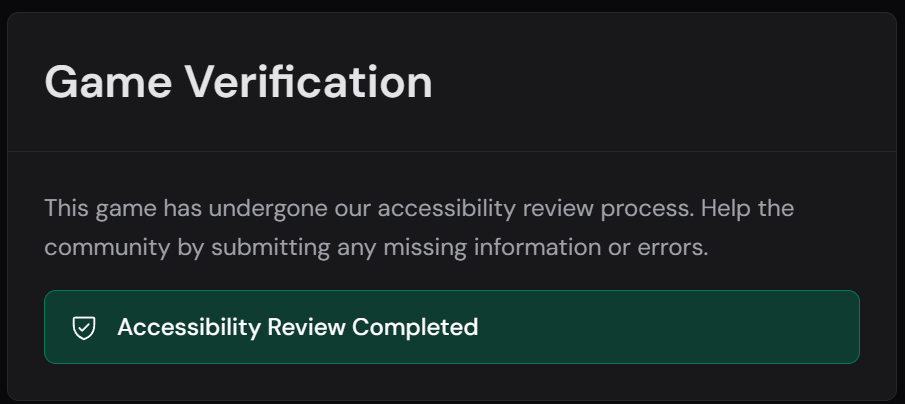
Missing Alt Text On Site Images?
For a site dedicated to accessibility, I did notice something odd. Many of the site’s images seem to be lacking Alt Text.
For example, the game cover images on the Discover page all have missing alt attributes:
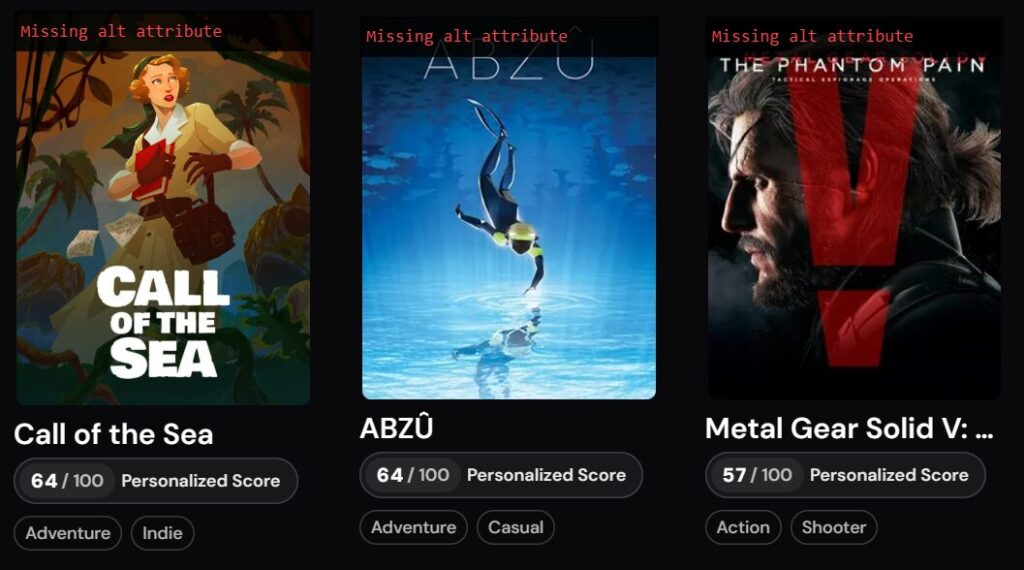
I’m not particularly well-versed in screen readers that rely on these alt text tags, but I imagine the lack of these tags might make navigating the site less enjoyable for some sight-impaired users.
That said, I want to stress that the site is in early access and Arman mentioned that updates to increase the platform’s accessibility are in the works, so I don’t think this is an intentional omission. I expect it’s something the site will correct before their public launch.
UPDATE: Since this article went live, Arman confirmed that alt-text for the site is in the works and should be released soon.
Upcoming Features on AbleToPlay
The site offers some hints of the types of features that will be coming to the site eventually.
User profiles have a block for Community Contributor experience:
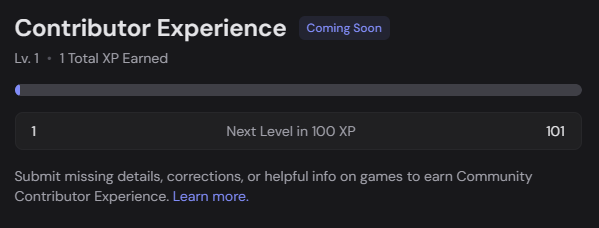
According to the site’s help page, this appears to be a way for users to gamify their experience on the platform and encourage participation. “Community Contributions are user-submitted updates, corrections, or additional details that help keep our game pages accurate and comprehensive. This collaborative system ensures that our platform maintains current, authentic, and verified information about game accessibility,” the help page reads.
Community Contributor level will provide “special recognition, benefits, early access to features, and more.”
The user profile also has sections for Badges and Achievements, so I expect we’ll see those implemented as well.
Are Accessibility Needs Private? AbleToPlay Says Yes
As they’re tied to medical information, it’s really important that accessibility needs be kept private. Thankfully, AbleToPlay seems to have robust privacy protections. The Needs and Preferences sections shows a helpful “Private: never shared” notation. Here’s what the site says about user privacy:
By default, all your profile and information security settings are set to private.
When you make a profile on AbleToPlay, the Needs and Preferences you set are never shared with other users or third-parties. Your data is only used for the calculation of your personalized accessibility scores when viewing games.
It is not possible for another user to see your needs or preferences, or to somehow tie your identity to any interaction on the platform you have not explicitly intended to make public.
By default, user data is kept on the site for 90 days after account deletion, and users can request immediate deletion of their data at any time, according to the AbleToPlay’s Privacy Policy.
AbleToPlay – My Take
Overall, I’m really excited for the site’s possibilities.
I’ve never seen a website that collects so much information on game accessibility features, and the ability to browse games by accessibility is something that disabled gamers have needed for a long time.
At the moment, the selection of games covered is very small, but I expect we’ll see the selection grow rapidly once the site moves closer to a public release.
I’m also curious to see what user-created content Arman and his team implement — accessibility is such an individualized beast, so what makes a game accessible for me may not necessarily help someone else. (Even with photosensitive epilepsy, for example, different frequencies and wavelengths of light can affect two people differently.)
User-created content has the potential to open a lot of doors by allowing disabled gamers to easily share their experiences and help others find accessible solutions to their individual gaming needs.
Want to try AbleToPlay yourself? Click here to sign up for AbleToPlay’s waitlist.
